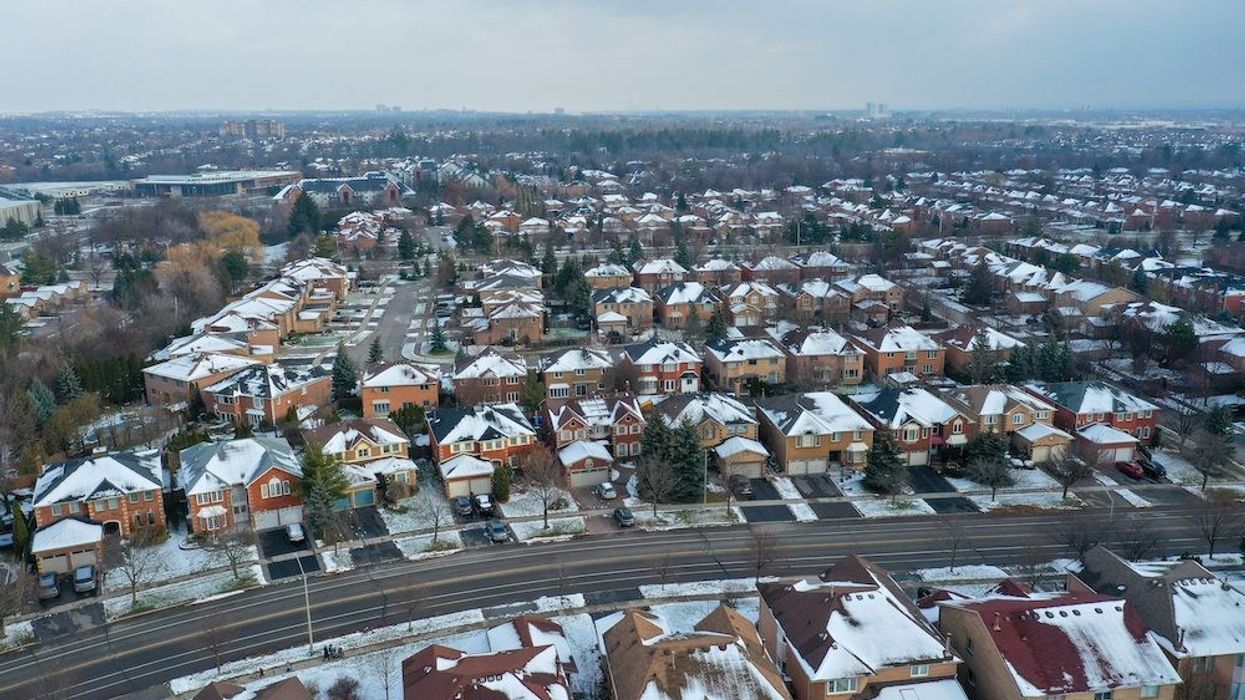There is an apocryphal adage that states, “May you live in interesting times.” Though it sounds like a blessing, it’s actually a curse as interesting times are usually periods of extreme chaos or disorder.
Unfortunately, we find ourselves living in truly interesting times these days, especially when it comes to the housing market.
The residential building industry is presently in the midst of a perfect storm, the repercussions of which will ripple across society. We have a massive housing crisis which poses a danger to our society.
Without affordable and adequate housing supply in our cities, people will no longer be able to work close to where they live. Forget the vision of a 15-minute commute to work. People are leaving cities like Toronto to seek more affordable accommodation. Immigration is keeping the numbers up, but newcomers will eventually find themselves in the same situation, and have to move.
The situation can be corrected if governments and industry are on the same page. Out of adversity can come opportunity.
The perfect storm has been created by a number of factors.
We have an aging population and can not fill jobs, especially in the construction industry, through domestic recruitment alone, so we need immigrants to ensure our economy keeps humming. Both the education and immigration systems need to be improved to meet our skilled trades needs. The tight residential construction industry labour market, for one, relies heavily on immigration.
Inflation is still high, running around 5.9%, and interest rates have risen to a level not seen since 2008. The housing market, which was in bull territory for almost a generation, is now in a correction. Sales of new homes have plummeted due to a variety of factors and rents are going up.
As of November 2022, 73% of developers were looking to pause construction of projects, up substantially from 33% in August 2022, according to a cross-Canada survey done by Altus Group.
We presently aren’t building enough housing to keep up with demand. The provincial government has set a widely accepted target of building 1.5M homes in Ontario over a 10-year period. However, according to modeling done by the Canadian Centre for Economic Analysis, Ontario needs 1.78M homes over 10 years while CMHC reckons 1.85M homes are needed.
Last year, the residential construction industry in Ontario built about 96,000 new units. Traditionally, the industry has averaged about 75,000 units a year. We’d have to substantially increase production to meet the targets. Sales are dropping, however, at a time when we need them to increase. When the fundamentals improve, and they will, there will be pressure to significantly ramp up production. It is critical then, that we lay the groundwork now for that to happen.
New housing is stymied by exorbitant government taxes, fees and levies. Taxes and charges account for 30% of the cost of new housing. That figure has doubled since 2016.
Rental housing is in the same boat. Government charges accounted for 22-27% of the cost of a typical apartment building in Toronto in 2022, up from 14-18% in 2016.
Meanwhile, supply chain issues, and material and labour shortages continue to dog the industry.
A lasting fix requires all three levels of government and the industry to get on the same page. Lip service still coming from some will not overcome these hurdles.
It is abundantly clear that we must digitize and streamline the development approvals system across the province in order to speed-up the build of housing. AECO Innovation Lab and RESCON have been working on the One Ontario initiative to accomplish that and a pilot has now been approved for Simcoe County.
We must also speed up the approvals process. It takes far too long to get shovels in the ground for a project. The timeline for approvals in Toronto was 32 months in 2022, up from 21 the year before.
We also need to significantly expand as-of-right approvals for densified housing and additional housing forms and remove brutal zoning and site plan restrictions to boost construction of housing.
We must make use of advanced technology like digital twinning to improve designs and building practices. The technology has been adopted by many cities and regions around the world for smart urban planning and can be used to improve residential development and help Ontario prepare for the future.
Modular and panelized construction can also be adopted for certain types of residential construction. While not a silver bullet, embracing off-site construction can certainly help with the situation.
The province has been active on the housing front and passed decisive legislation to spur new residential construction. Municipalities must now work with the province to build housing for the future. The federal government, meanwhile, must also begin reinvesting the massive housing HST funds it collects into infrastructure and other supportive programs to spur residential construction.
The challenge is daunting and many still underestimate the crisis at our peril. But, to borrow some construction terminology, if we put in the pillars of a solid foundation, we can build a brighter future.





















